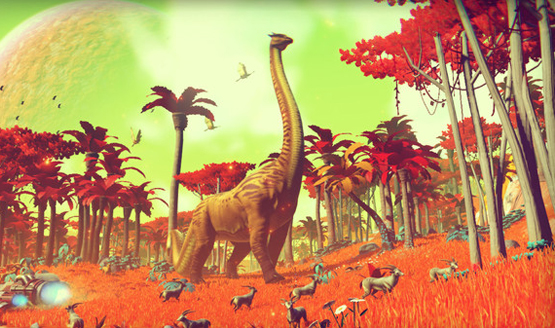The word hype is thrown around a lot these days when talking about video games. But few games have reached the heights of hype that No Man’s Sky, especially considering the small size of the team at Hello Games. This dozen or so group of minds have been working at a fever-pitch rate to deliver what may be considered their magnum opus. For many gamers, the release of No Man’s Sky has been a long time coming. So has all the buildup of gargantuan hype been worth it?
Goods Delivered
In a word, yes. Everything that Hello Games ever claimed to be in the game appears to be in here. That’s a very important distinction that some people may have a difficult time understanding. The unfortunate side effect of all the hype that No Man’s Sky received over the past three years since its explosive introduction to the world at E3 2013 is that it couldn’t possibly live up to everyone’s expectations.
We live in a world of entitlement; some people feel that No Man’s Sky is their game, and that it should fulfill some grand vision of theirs. The only problem with this way of thinking is that this has always been Sean Murray’s vision, as has been his right as the developer. The game released when he was happy with it. It’s his (and his team’s) galaxy; we just get to play in it.
And play you will! Without giving anything major away, the game begins with you in dire need of supplies. There’s little instruction, and you must act relatively quickly if you hope to survive the night. It is here that you learn how to collect resources, which parts do what on your ship, and how your multi-tool works. It is also during these first few minutes that the game has likely either sold you on its premise, or fallen flat.
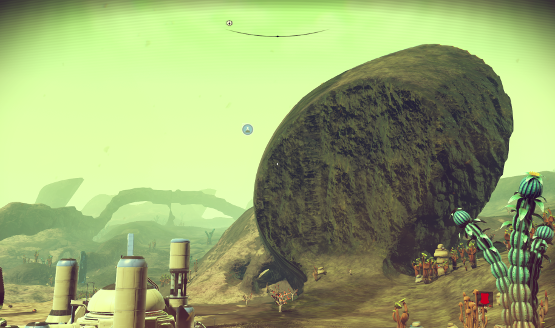
Choose Your Adventure
A typical hour in No Man’s Sky can go a little something like this: As your hyperdrive cools down, you begin to descend on your target planet, when suddenly a warning signal appears on your ship’s HUD. A pirate starship has scanned your vicinity, and detected the precious cargo on-board your ship. Your speed is such that you can likely outrun them and land safely on the planet. However, you did recently upgrade your ship’s weaponry, and naturally you’re eager to test out your new toy. So you reverse course and get ready for a fight. You line up your reticle, pull the trigger, and hit your target dead-on. But your enemy is well-armed, and came in a group of at least three; you’re hit multiple times, and before long your shields are down. Bringing up your inventory mid-fight, you recharge your shields using materials acquired from the last planet you were on, and continue the fight. One fighter down. Now two. The third comes in from behind, but you flip on the reverse thrusters and quickly take care of him. Unlucky pirate number four is off in the distance, firing at an innocent merchant vessel, perhaps hoping you don’t see him. Fat chance; a few photon cannon shots easily take him out. Your bravery is rewarded by the merchant whose day you just saved. Now, time to descend to your original target, in search for some ruins. Just before you break into the atmosphere, you notice a small orb in the upper-left corner of your vision.
It’s a moon! The last time you landed on a moon, it had the most absurd landscape and things to upload to Atlas, the central database of information which pays you for documenting your findings. Oddly, no wizards though. Anyway, you decide to take your chances on this new moon first. Changing course, your excitement is quickly turned into disappointment as your visor confirms on its readout when you touch down: It’s a barren moon, devoid of all life, and nary a sentinel to be found. You lazily survey your surroundings, when you notice a few odd shapes jutting out of the ground. A closer inspection reveals a mountain of gold! Other rare minerals are deposited in similar-sized mountains. A grin spreads across your face, and you gleefully fill up your inventories with as much precious metal as you can carry. A distress signal is picked up by your ship, but you pay no mind to that right now; you just hit the motherlode, and you have a space station to get to!
No Man’s Sky feels like a hard sci-fi game, without actually being all that tough of a game. Most challenges outside the immediate statistics-based ones that you are constantly being rewarded for completing will be ones that you set yourself, in an unofficial capacity: buy a 1,000,000+ unit-priced starship, for example, or discover 100 percent of all flora and fauna on a planet or moon. If you’re the type of gamer who likes creating their own challenges for yourself, it’ll be hard to run out of things to try in No Man’s Sky.
Can’t Please Everybody
On the flip side, those who require a structured game, which floods your UI with objective after objective overlaid on top of a nice, neat map, will not enjoy No Man’s Sky. Part of the beauty of the unstructured nature of this and other sandbox games is that you can do whatever you want within the game’s mechanics; if this lack of structure infuriates you then this title will do little to convince you. It’s okay that some people aren’t wired for a game like this. I know I’ll spend hours on end mining in Minecraft, usually to Daft Punk’s Random Access Memories album, just the same as I can spend even more hours in this virtual galaxy, collecting countless minerals, perhaps even to the same soundtrack. There is an ultimate goal in No Man’s Sky, just like there is in Minecraft, but it is entirely optional, and once complete, the game continues on anyway. That being said, the crafting on offering here is a little underwhelming. Due to the large size of the galaxy, the inability to build anything on planets is understandable but still stings; you also cannot craft ships, something I feel is a missed opportunity. You can craft technologies that you find for your exosuit, multi-tool, and ship, and weighing the pros and cons of each is a fun balancing act which takes some time to get just right.
No Man’s Sky also includes a trade economy, which has fluctuating prices and a handful of factions. Through repeated interactions and exploration of ruins and monuments, you can gain or lose standing with any of these factions, which can unlock more fruitful conversations with members. You learn words in each faction’s native tongue, which can help to decipher some conversations and computer terminals later on. Any time my visor points out an ancient ruin, I make a beeline towards it, ever on the hunt for more knowledge. The lore would feel right at home in a choose your own adventure sci-fi novel, and plenty of fans will soak it all up.
Flawed Beauty
From just a technical standpoint, No Man’s Sky is incomprehensibly large. With the much-touted 18 quintillion+ planets available to explore, distances are indeed vast. I began my journey some 176,000 light-years away from the center of the galaxy, a number that grew only a little smaller with each successive hyperspace jump. Just a heads-up: until you upgrade your starship enough, or purchase one that has already been upgraded, your progress will be slow. Sure, some people will power through the game and reach the center in their first week of playing, but there is genuinely no rush; because the game can be played offline, whatever is at the center of the galaxy can wait as long as you need to see your fill of this mindbogglingly large galaxy.
No Man’s Sky tends to look quite nice, most of the time. Once the game is loaded, there are no loading screens. Jumping between star systems includes a trippy animation and accompanying music which sounds straight out of the sci-fi classic Bladerunner. But move at even sprinting speed on a planet, and you’ll no doubt see some pop-in of textures. Destroying the environment can occasionally result in some weird graphical glitches as well, though these are less common. Still, some of the most wonderful moments to be had in No Man’s Sky occur when you slow down and take in your surroundings. There’s beauty to be found in these procedurally-generated landscapes, from lush tropical jungles to arid deserts, and everything in between. I think I’ve taken a screenshot at every planet and moon that I’ve touched down on, something I plan to do every time I play the game.
The soundtrack is also procedural in No Man’s Sky, and usually matches whatever is going on in your game. It’s equal parts majestic, relaxing, dramatic, and even a little frightening from time to time. You are almost alone in your adventure for most of it, and the game’s music reminds you of that. Coupled with the roars of some of the larger fauna you’ll encounter on your journey, and you can completely lose yourself in a world if you have a good set of headphones on.
So No Man’s Sky isn’t flawless. It’s probably not for everyone. Then again, No Man’s Sky is exactly as described by the eccentric Sean Murray. If you’ve ever dreamed of being a cosmonaut, of starting with practically nothing and amassing a fortune, of becoming a notorious space pirate, or had any other of the countless sci-fi fantasies out there, this is probably the game for you. Now, those fantasies might not play out exactly as you’d have hoped in No Man’s Sky, but this is a game that begs those who put in the time to come back just once more and see what lies just over the horizon. If this game is right for you, you won’t be able to put the controller down.
No Man’s Sky review code provided by publisher. For more information on scoring please see our Review Policy here.
-
A truly endless galaxy to explore
-
Several separate pillars of experience
-
Exactly as Hello Games described...
-
...which may not be what you expect.
-
Texture pop-in can be obvious
-
Turning in discoveries can be a little tedious.
No Man's Sky Info Dump
-
No Man's Sky - Everything You Need to Know

Scrub up on your knowledge of Hello Games' space oddity in time for its long-anticipated release.
Your universe awaits.
-
First Gameplay Revealed
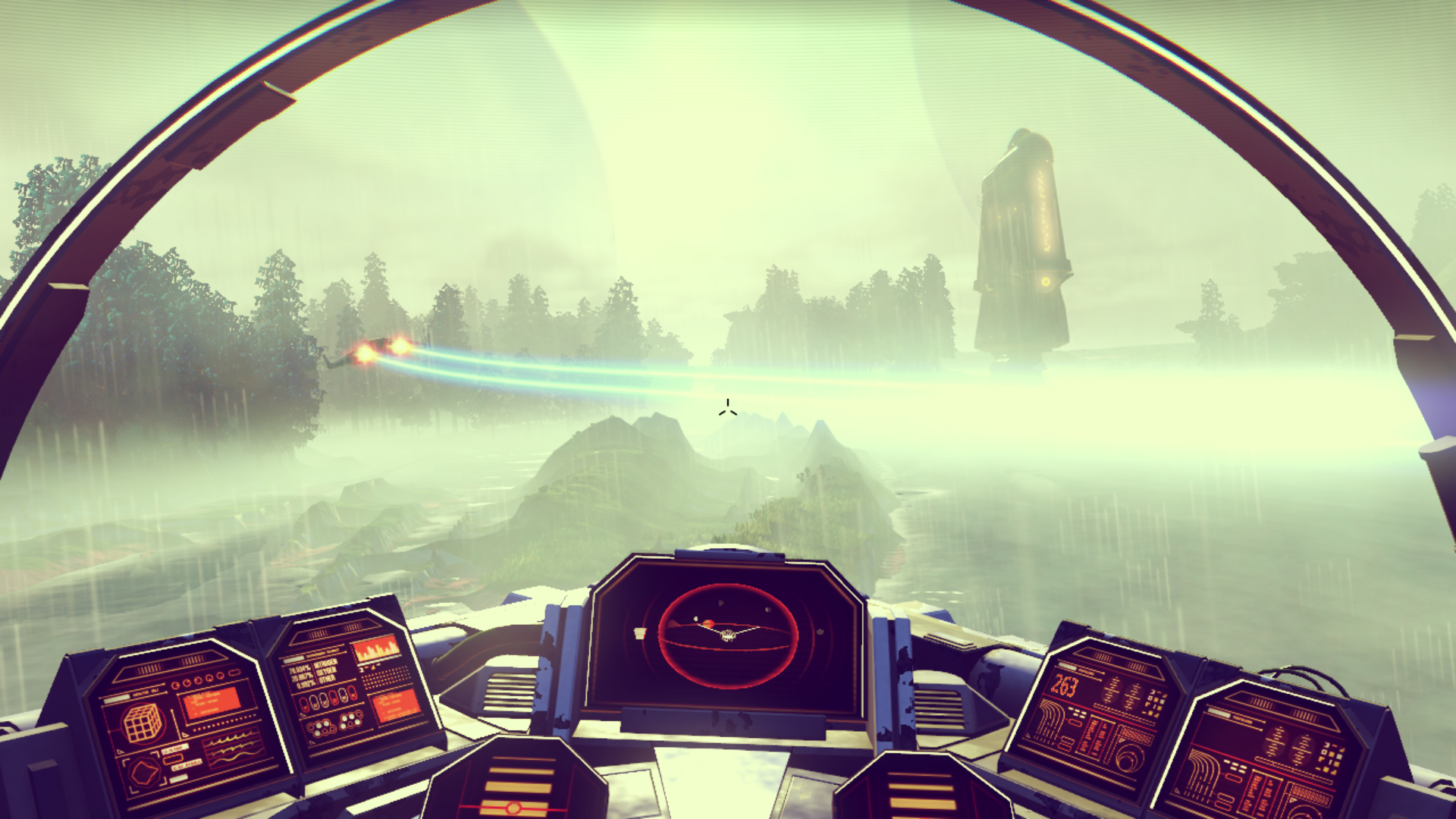
Six months on from its show-stopping unveiling, Hello Games took to the stage at E3 2014 heralding the first look at No Man's Sky in action.
It proved a defining moment in the game's development arc, not only wowing the industry with tangible gameplay, but aligning it closely with Sony and PlayStation 4. Which brings us to...
-
Why PS4?
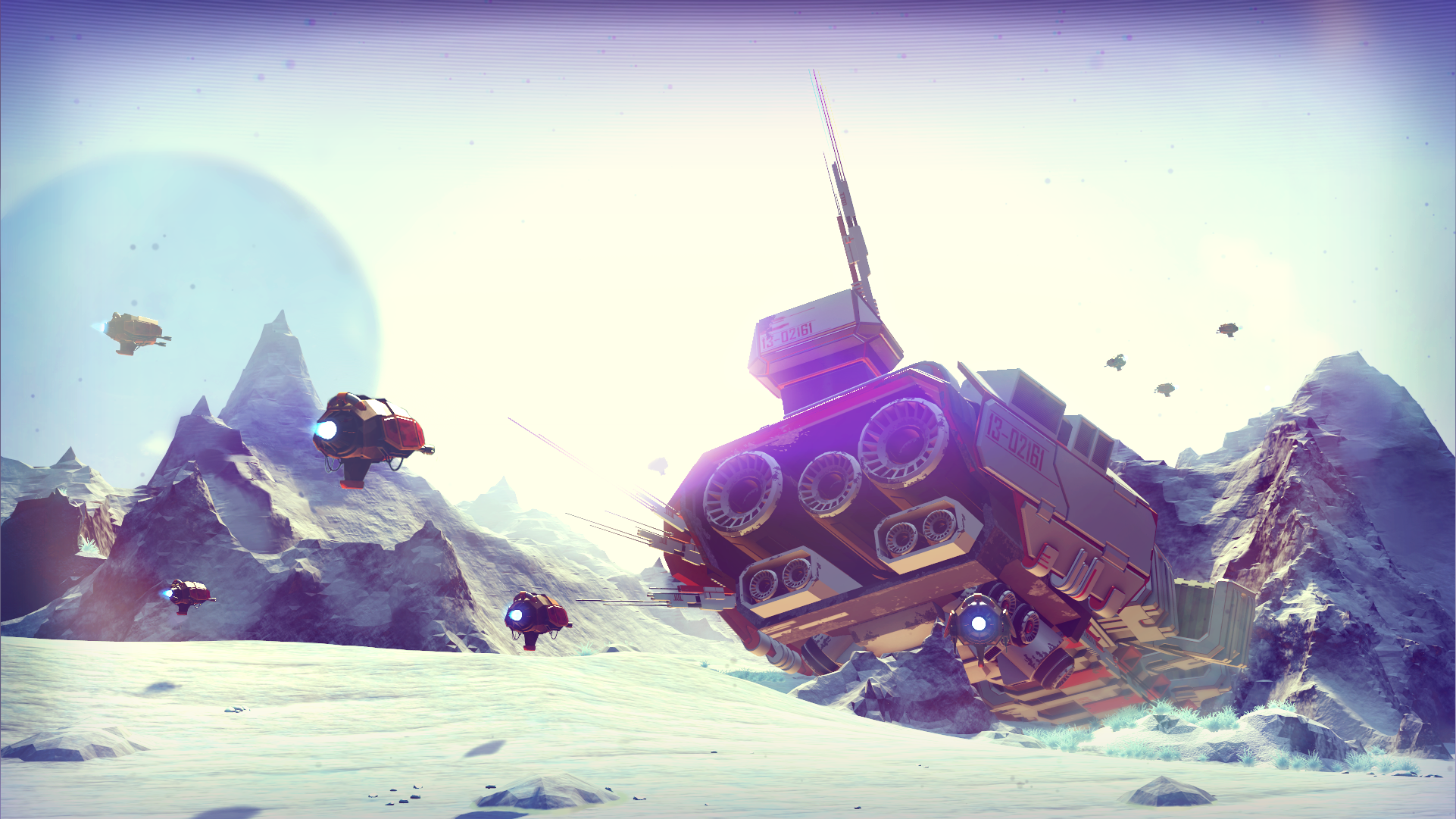
Despite some confusion at first, No Man's Sky will be releasing as a timed PS4 exclusive, expanding to PC soon after its debut early next week.
But the power of Sony's system effectively shaped Hello Games' approach to No Man's Sky from top to bottom -- be it design, control or performance.
Said Sean Murray at the time: "We’ve always had PC in mind but in my head [console-y] means solid framerate and immediate controls."
During production, it's understood NMS had the "full weight of PlayStation" behind it.
-
Expect Journey-esque Multiplayer
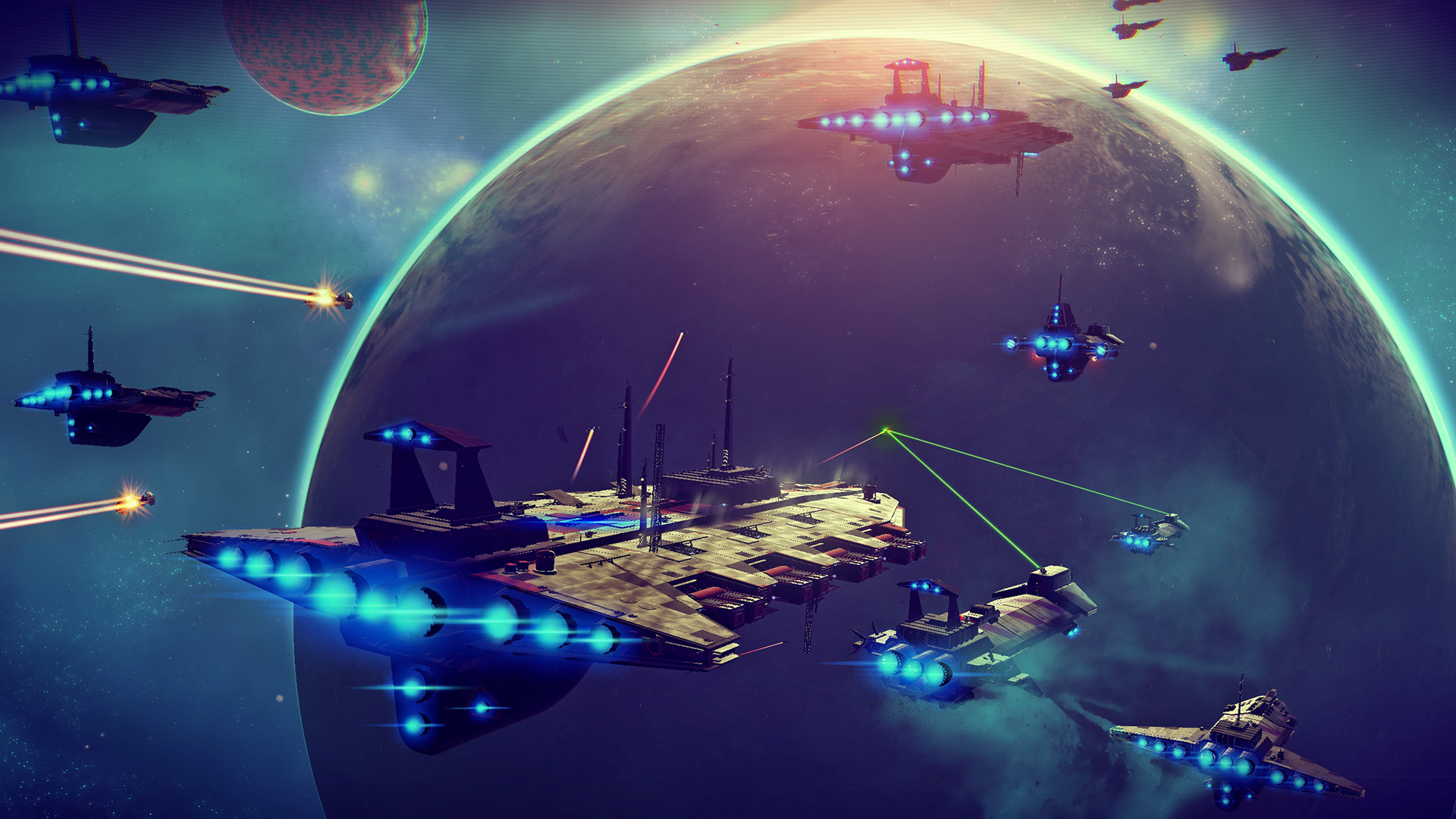
In adding a sense of order to the chaotic cosmos, Hello Games is eager to implement seamless multiplayer that will evoke memories of thatgamecompany's Journey.
Given the sheer scope of No Man's Sky, the odds of you crossing paths with another player are seemingly "really, really small."
But that doesn't mean you're totally alone, with Murray revealing that, "you get a sense that you’re playing with other people, and you can see the actions of other people, plus you’ll share things that are significant – if you take out a space station, we’ll share that, and that’ll be shared across the entire universe."
In space, no one can hear you, ahem, gather resources. Whatever the case, let's hope the prospect of running into potential allies offsets any boredom.
-
No Load Screens to Report

Tedious or no, one thing Hello Games is confident about is its game engine, which all but negates the need for load screens.
That allows you to jump from planet to planet without interruption, with Sean Murray noting that the studio "demoed this at gamescom, just jumping round the universe to different planets. There are no load times, because nothing needs to load, as the planets are entirely computer-generated."
-
More Than Meets the Eye
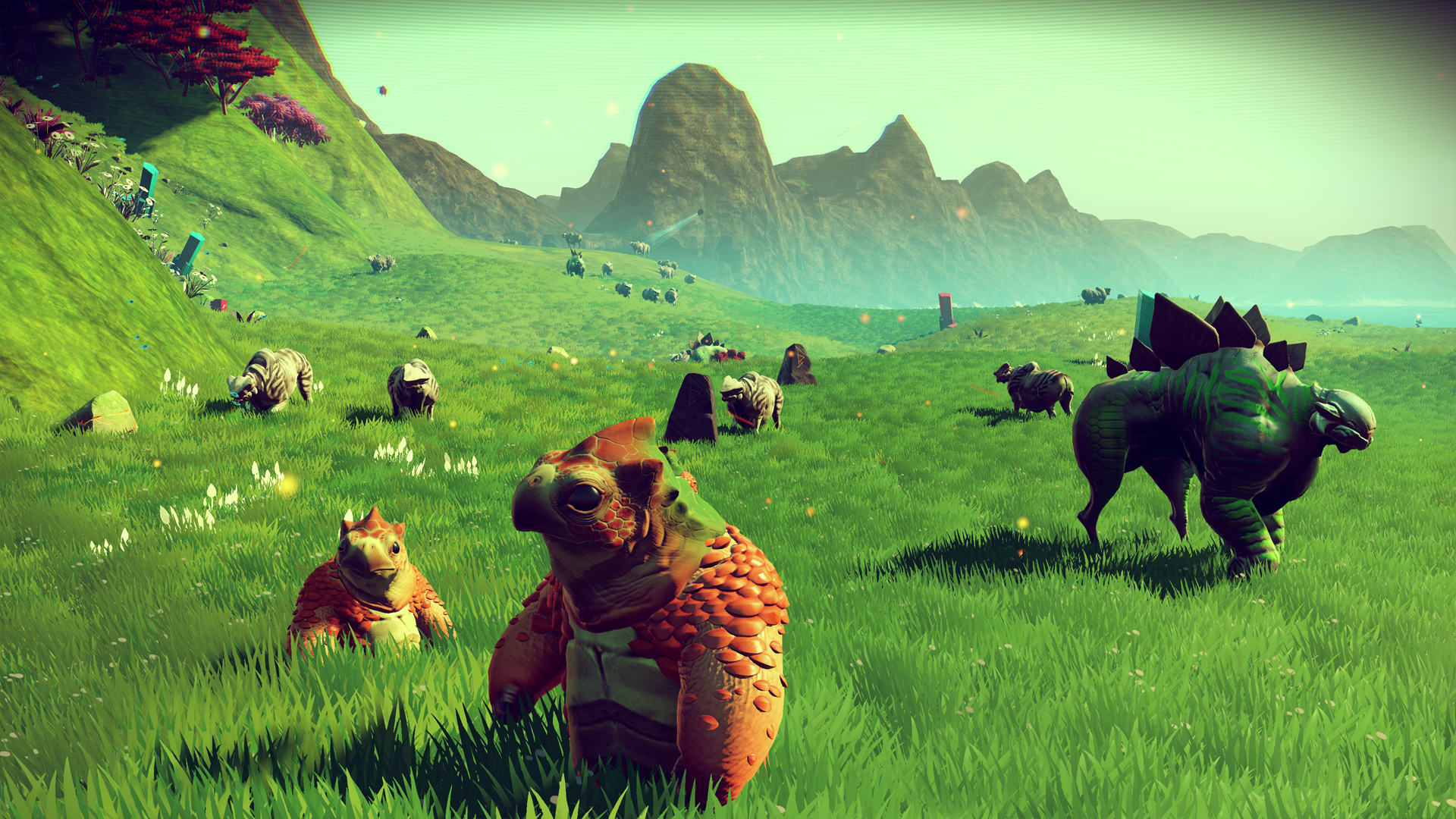
Unbridled exploration isn't the only selling point of Hello Games' new IP, and as development wore on, new details began to emerge regarding combat and the in-game wanted system.
-
One Year Later

A lot can change in a year. By 2014, The VGAs were now known as The Game Awards and No Man's Sky, commemorating 12 months since its reveal, unleashed a new gameplay clip that thrust viewers out into the far reaches of space.
-
No DLC Plans

As things stand, Hello Games currently has no plans for downloadable content, and appears to be angling No Man's Sky to be more of a platform.
Besides, with upwards of 18 quintillion planets to explore, is add-on content really necessary? In fact, the game is so big that Hello Games had to employ probes to oversee creation.
-
Too Big to Spoil
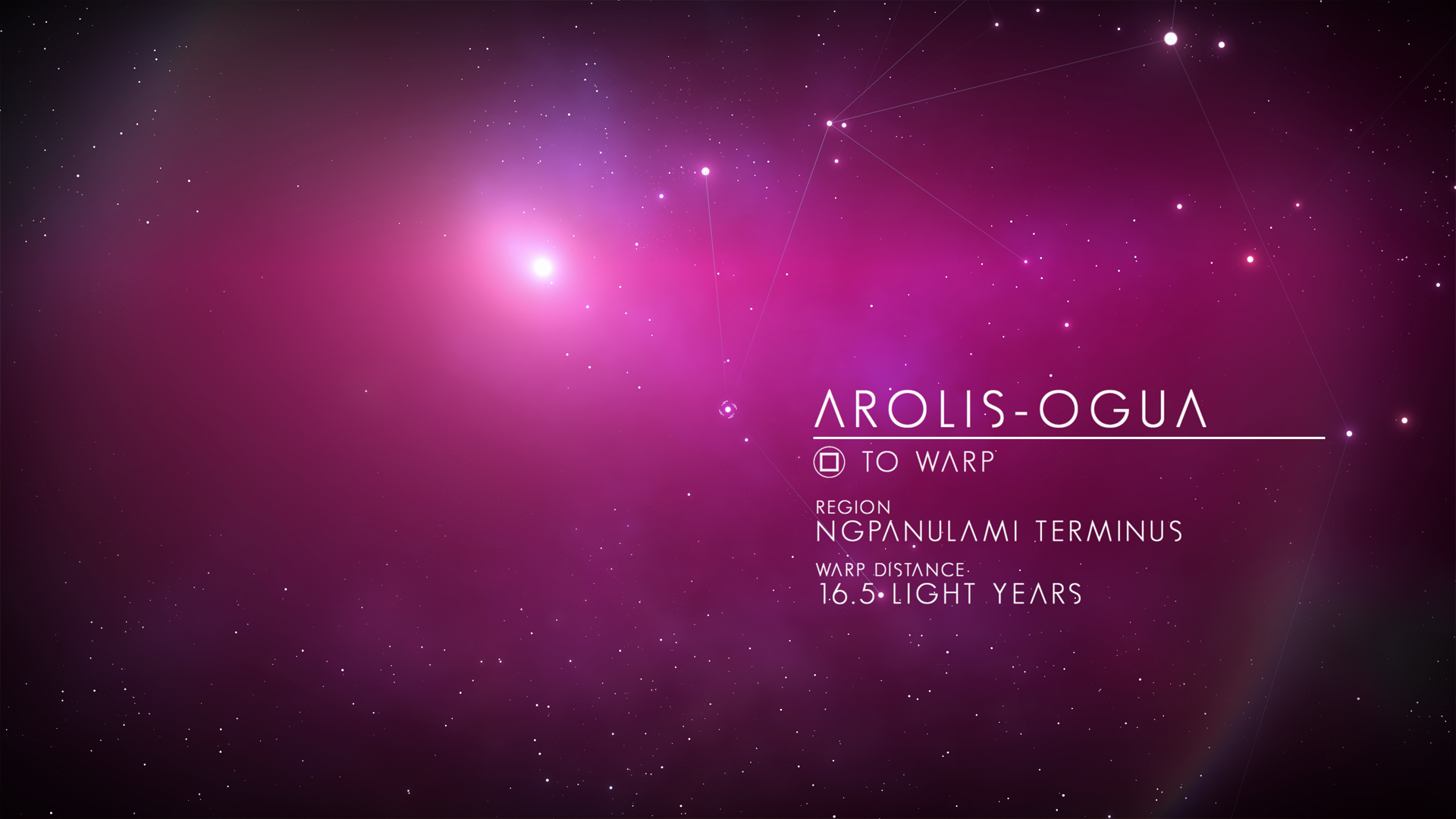
Even if you watched every single YouTube video for No Man's Sky -- of which there will surely be thousands -- it's virtually impossible to spoil the entire experience.
That's a point of contention that re-emerged quite recently, too, with Sean Murray asking early adopters to refrain from delving too deep and instead waiting to experience those surprises for themselves.
-
Hands-On Impressions
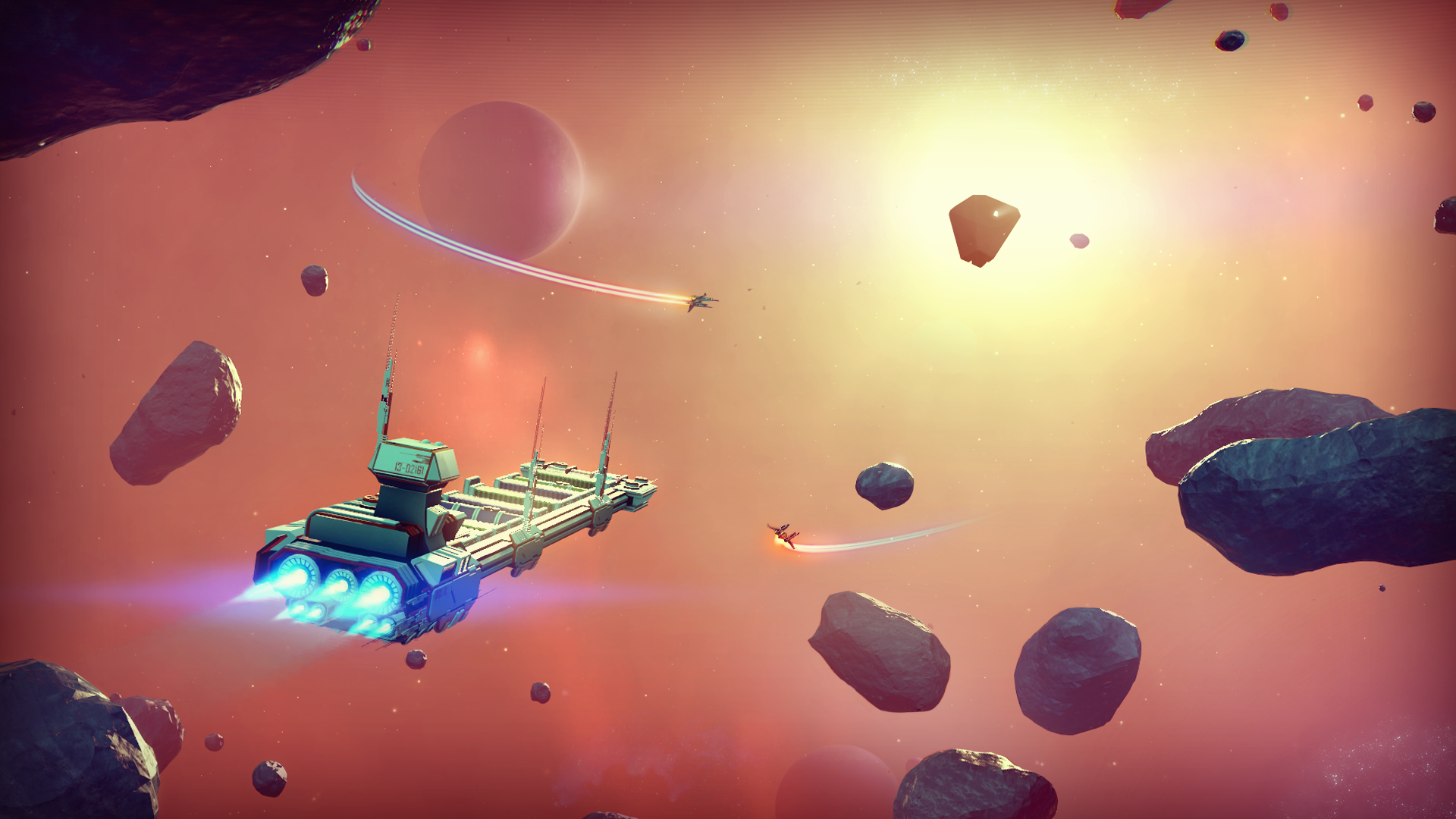
Putting Hello Games' epic to the sword, our own Chandler Wood went hands-on with No Man's Sky at E3 2015. It nabbed one of PSLS' coveted Best of E3 Awards, too.
Fast forward some nine months and we got our hands on a more complete build of the studio's space title. There's also a chat with Sean Murray himself.
-
Virtual Reality Not Off the Table
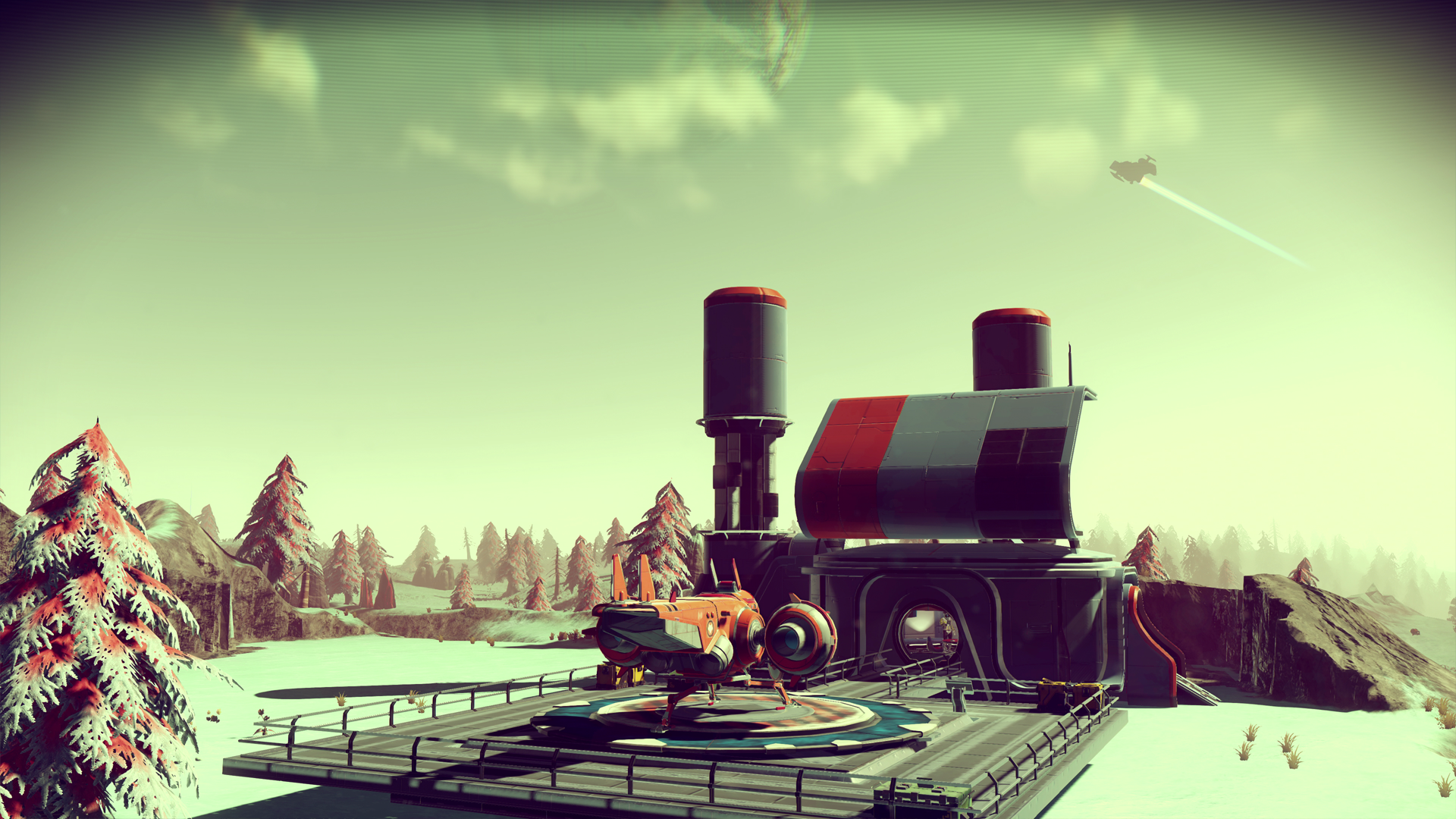
During our chat, the prospect of VR support inevitably came to the fore. That's something that Hello Games has flirted with before -- it could be the "perfect fit" -- even when the PlayStation VR was still referred to as Project Morpheus.
-
Smooth Sailing on PS4
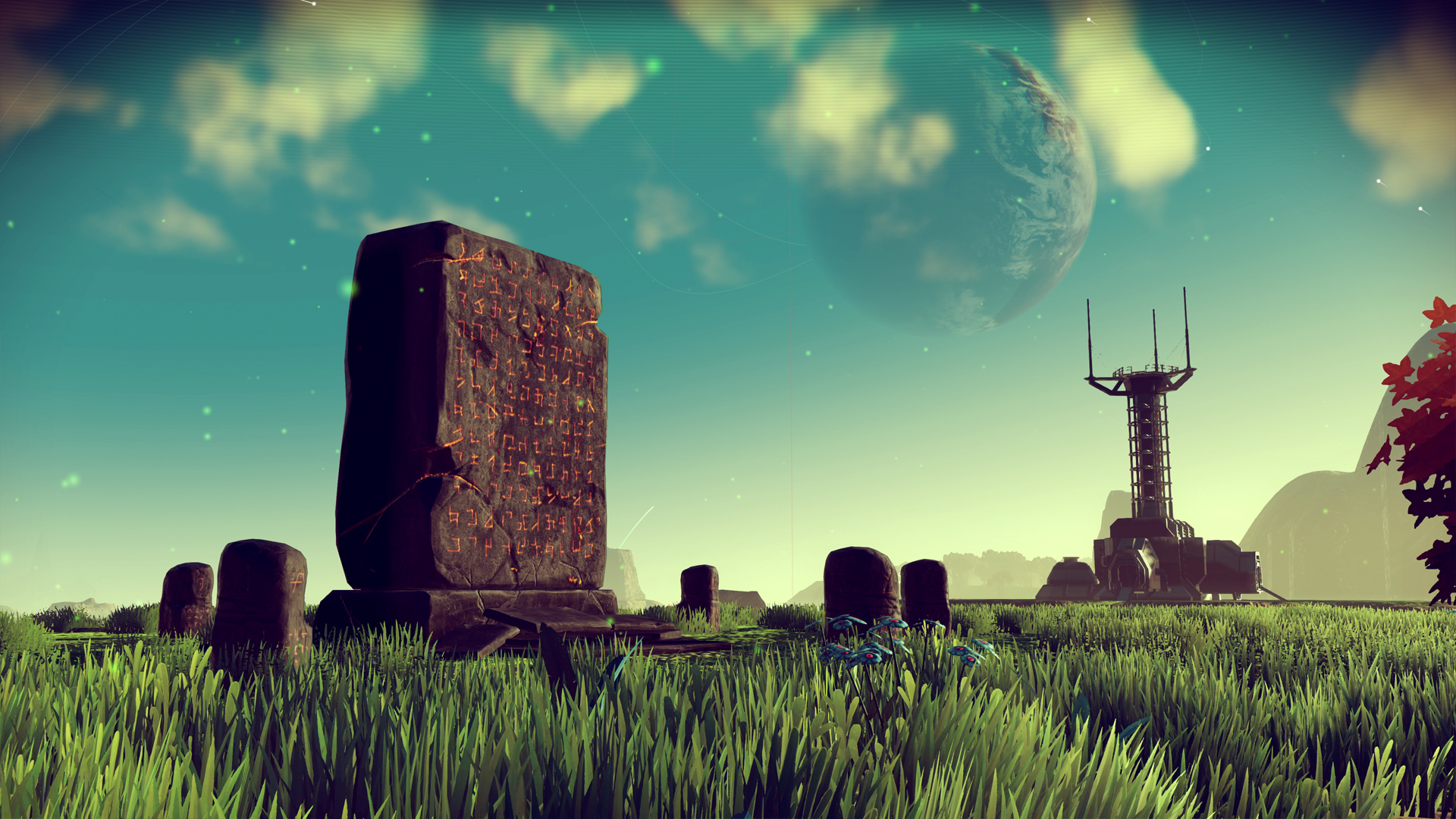
Despite reports to the contrary, No Man's Sky allegedly runs smoothly on PlayStation 4, and Sean Murray has allayed fears that the game will be hamstrung by frame rate issues and other technical hiccups.
-
Lore, Languages and Alien NPCs
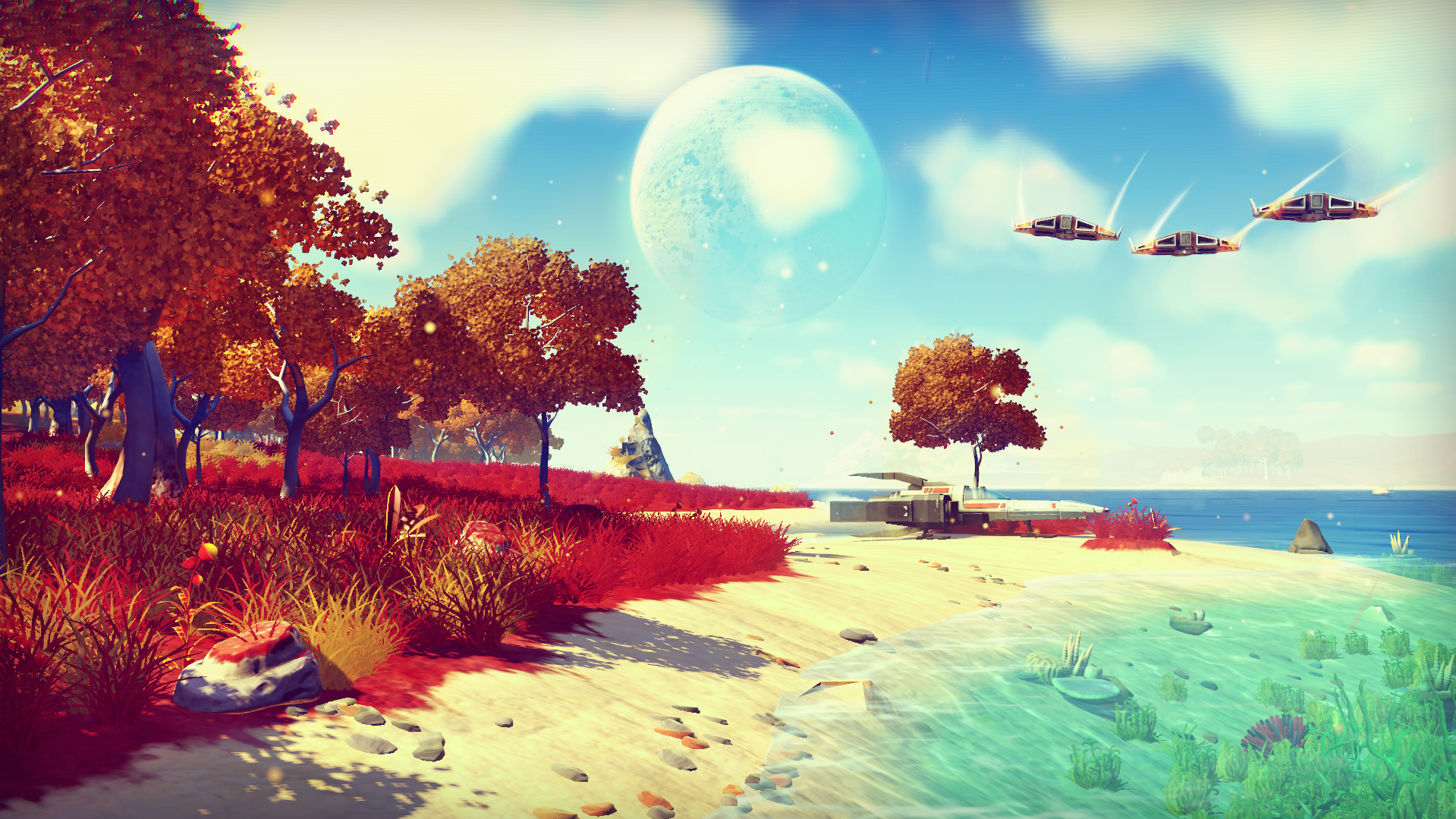
That's reassuring, too, considering the amount of lore here to discover. From NPC interaction to alien languages, No Man's Sky comes packing a rich, unfathomably complex universe to explore.
It's an interstellar narrative mapped out by the talented duo of Dave Gibbons (Watchmen, Kingsman: The Secret Service) and James Swallow (Deus Ex: Human Revolution, Star Trek).
-
Planetary Weather
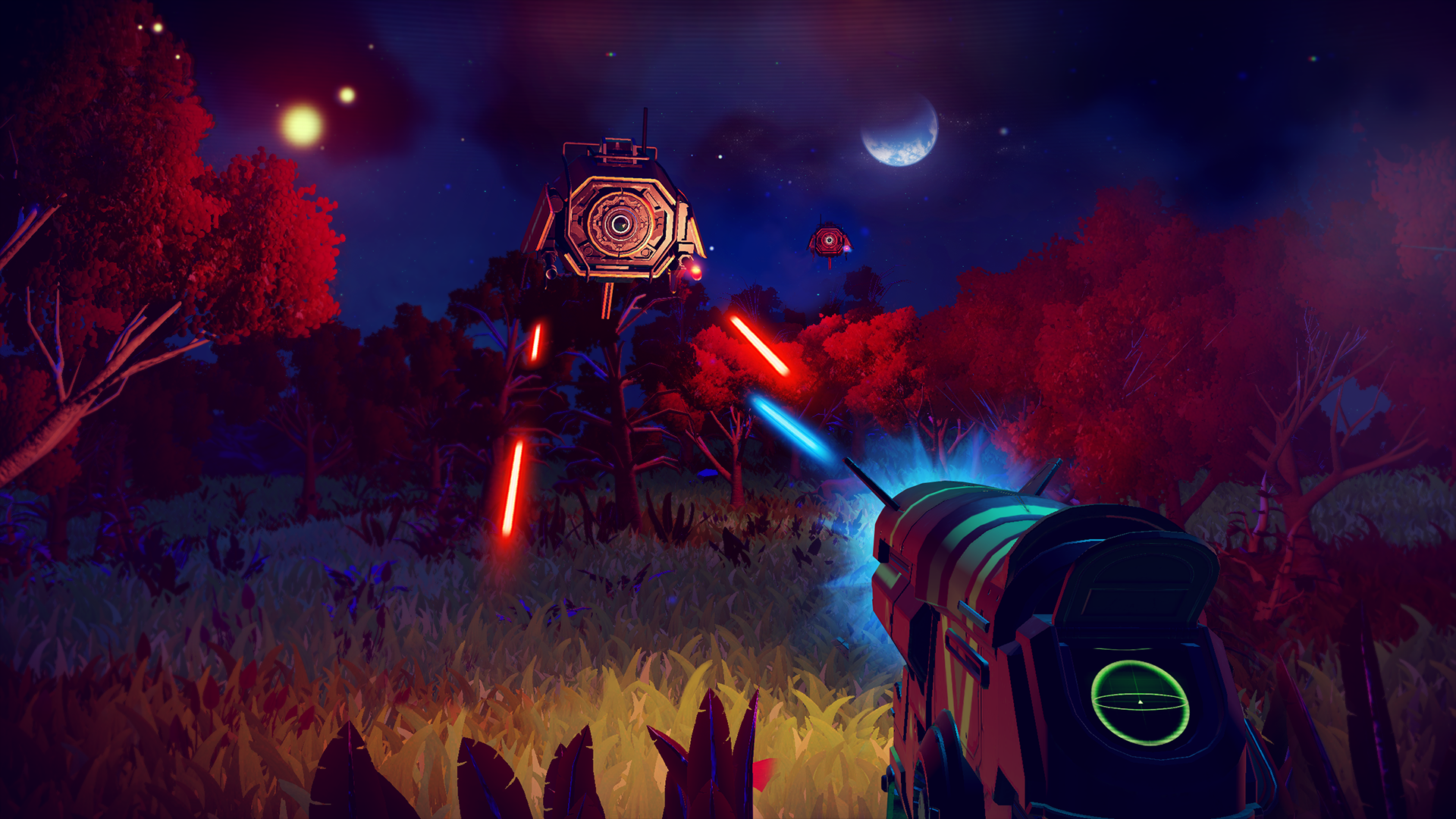
Such a boundless scope entices you to jump in the nearest spacecraft, right? Not so fast. Whether it's scorching hot temperatures or bitter-cold lows, many of the planets found in No Man's Sky are inhospitable.
"There are things like rain, dust storms, snow, blizzards, storms and a bunch of other things possible. There are also more alien weather types, effectively like radioactive and toxic hazards, and atmospheres made from different compositions to ours."
-
Prolonged Development
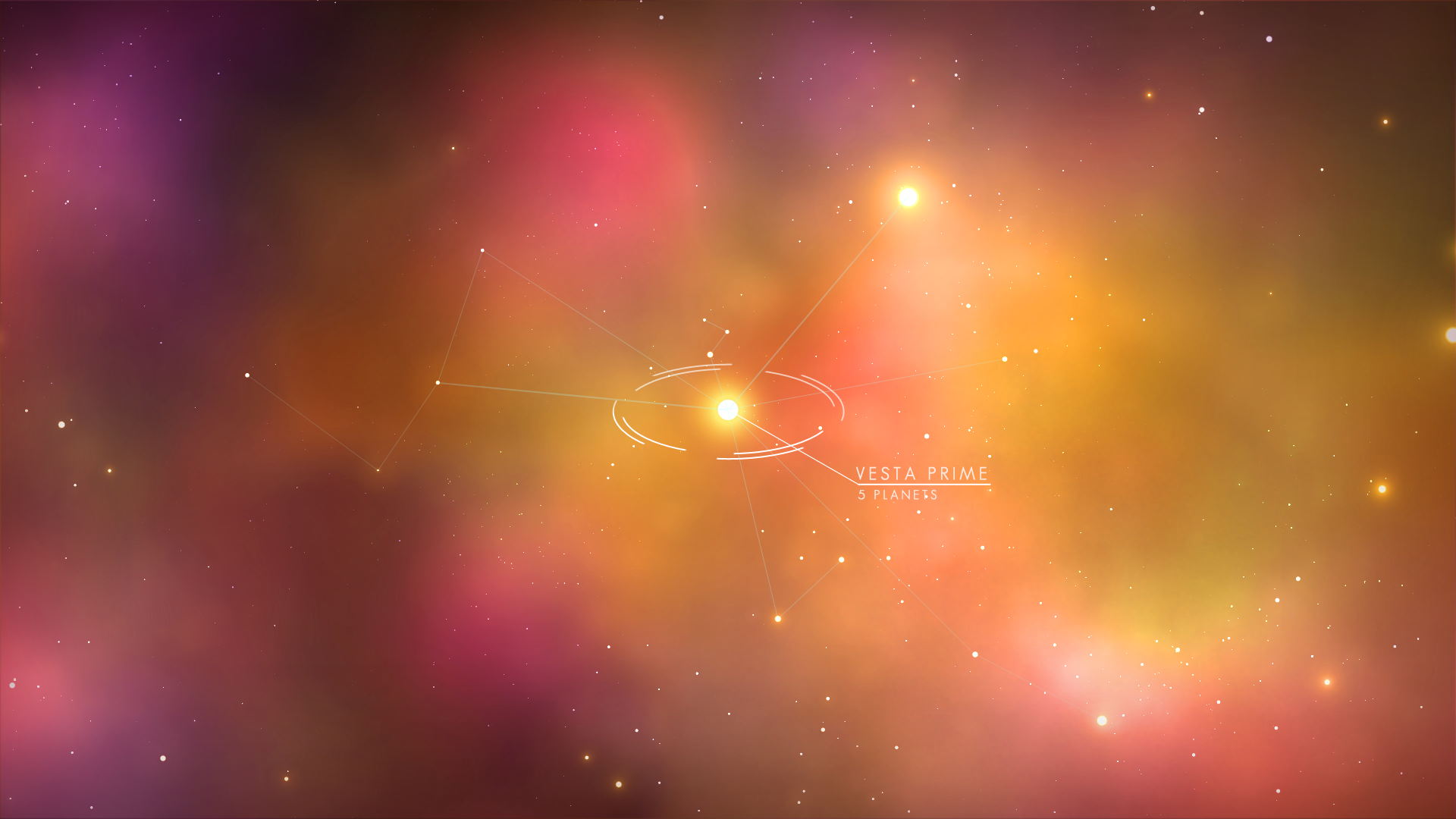
First showcased in the latter stages of 2013, it's fair to say No Man's Sky has been a long time coming.
Confirming initial reports to be true, Hello Games announced plans to postpone its hotly-anticipated title back in May, pegging No Man's Sky to the now-final release date of August 9 in North America.
If you're wanting to delve a little deeper, check out our piece recounting the road so far.
-
Hello Games Came Close to Pulling the Plug
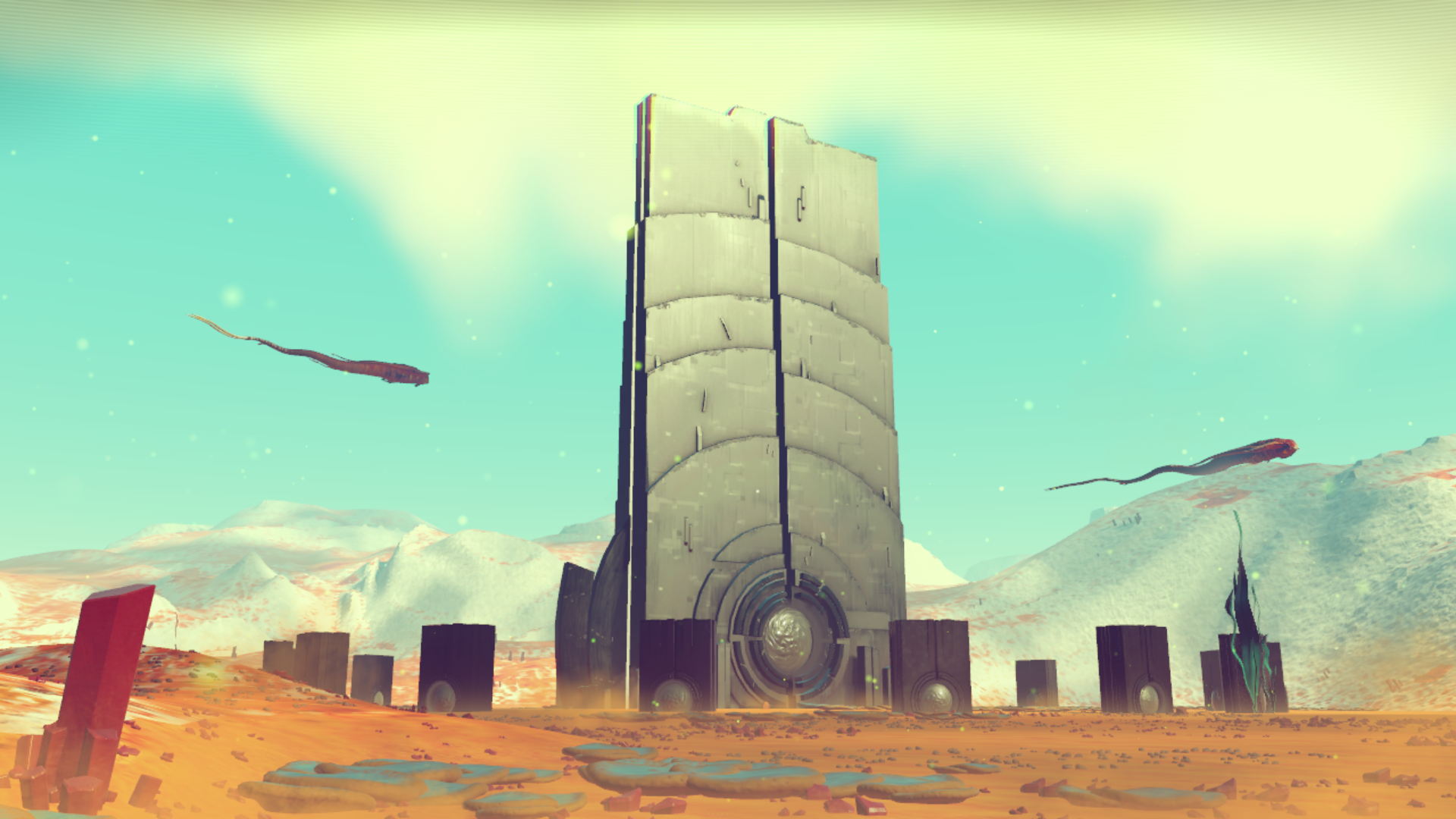
Fearing that the game wouldn't garner much interest, Sean Murray admitted that Hello Games came close to never revealing No Man's Sky in 2013.
That wasn't the only time when doubt was cast over the ambitious space sim. Only a few weeks after said announcement, the studio's home base in Guildford, England was hit by a devastating flood.
-
The Flood
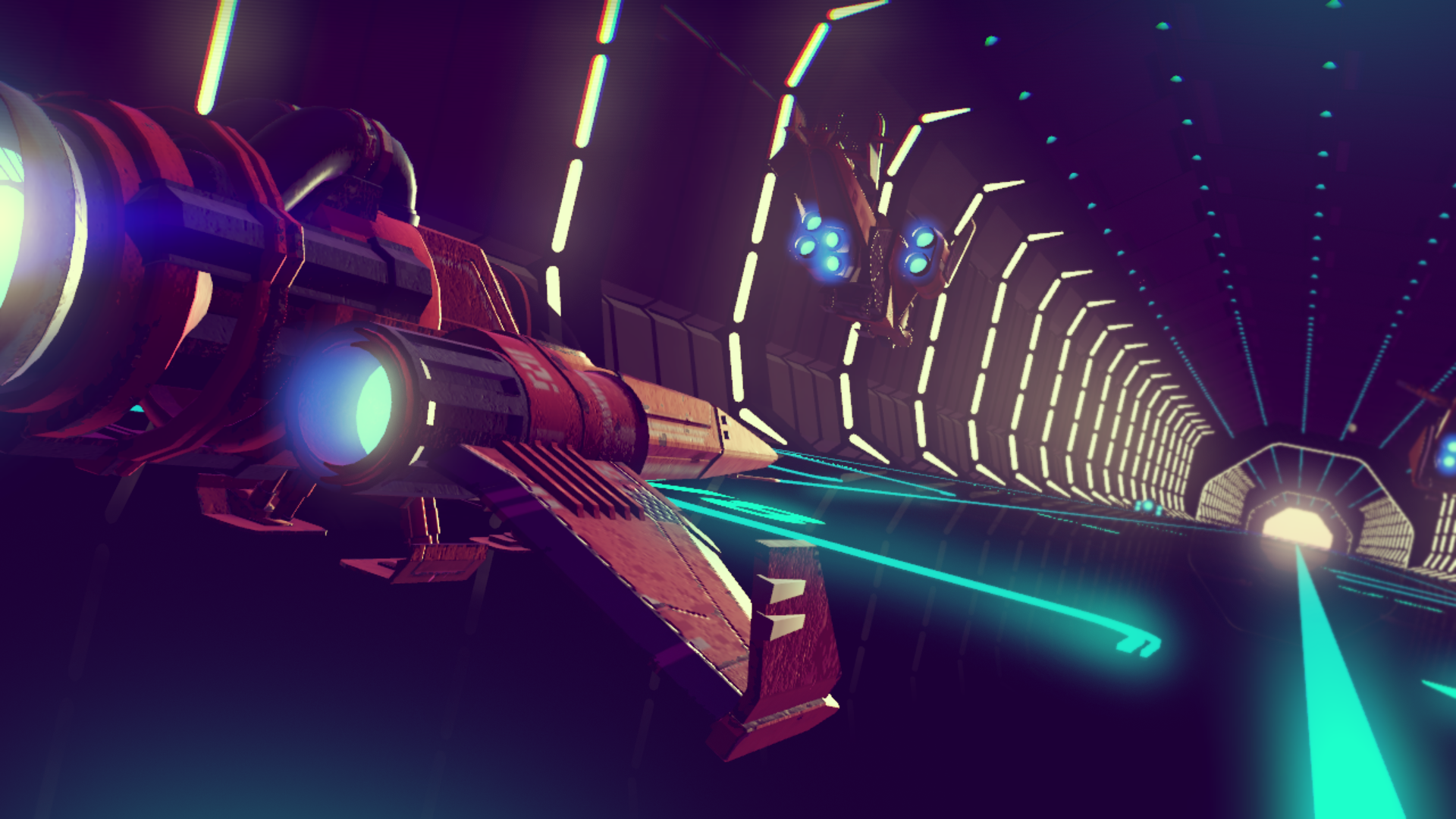
Christmas Eve, 2013. It's a time when Hello Games should have been riding high coming off the back of The VGAs. But a cruel flash flood brought that fairytale down to earth, with the studio revealing at the time that a significant chunk of work and development tools had been lost.
-
Legal Tussles
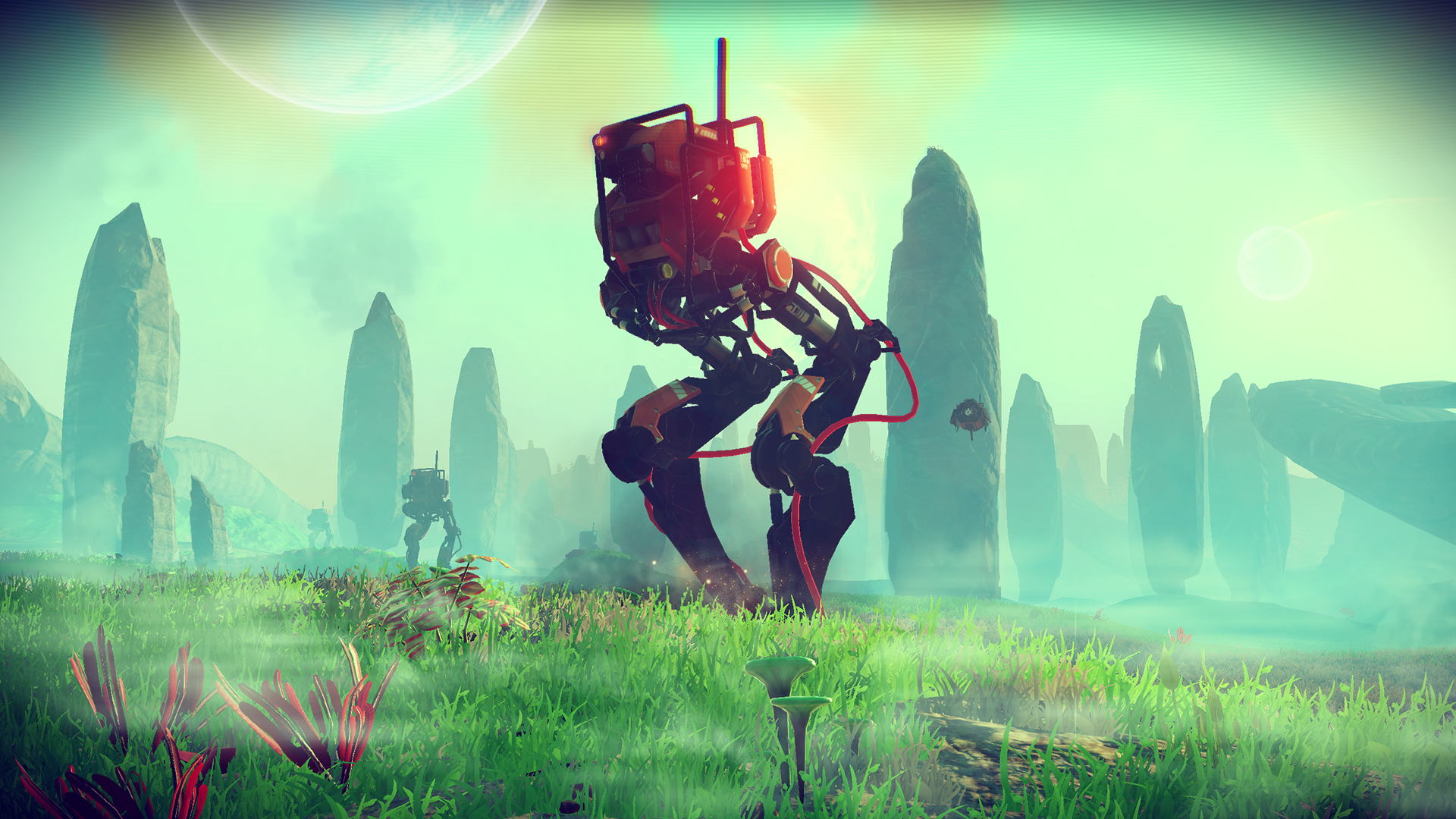
Hello Games' struggles stretched beyond natural disasters, too, after the developer was forced to settle a "secret" dispute regarding the No Man's Sky title, not to mention the allegations made against the patented superformula. Both were settled with relatively little fuss.
-
Most Anticipated Title of 2016

It makes for quite the comeback story, though; according to a straw poll conducted by Amazon, No Man's Sky stands as the most-anticipated title of 2016.
-
Soundtrack

Featuring music from instrumental band 65daysofstatic, the official No Man's Sky soundtrack will be released in tandem with the game next week with the promise of additional music further down the line.
-
No PlayStation Plus Necessary
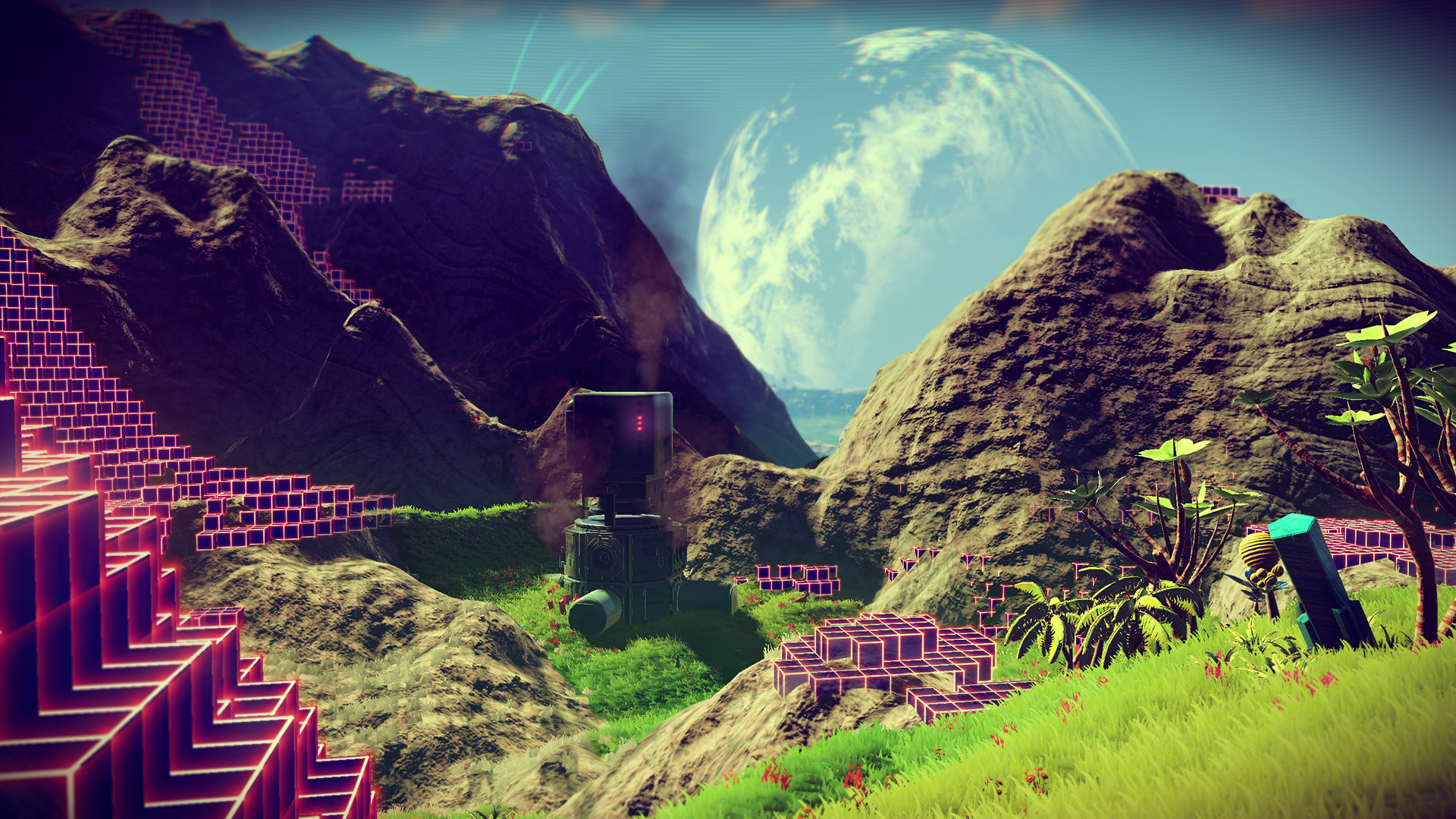
Though it's recommended to get the full experience, PlayStation Plus is not required to play online in No Man's Sky.
The only drawback is that you can't contribute to the in-game Atlas: "PS Plus won’t be a requirement to play online, however you will need to connected to the internet for your discoveries to register with the universal atlas." Speaking of which...
-
The Atlas
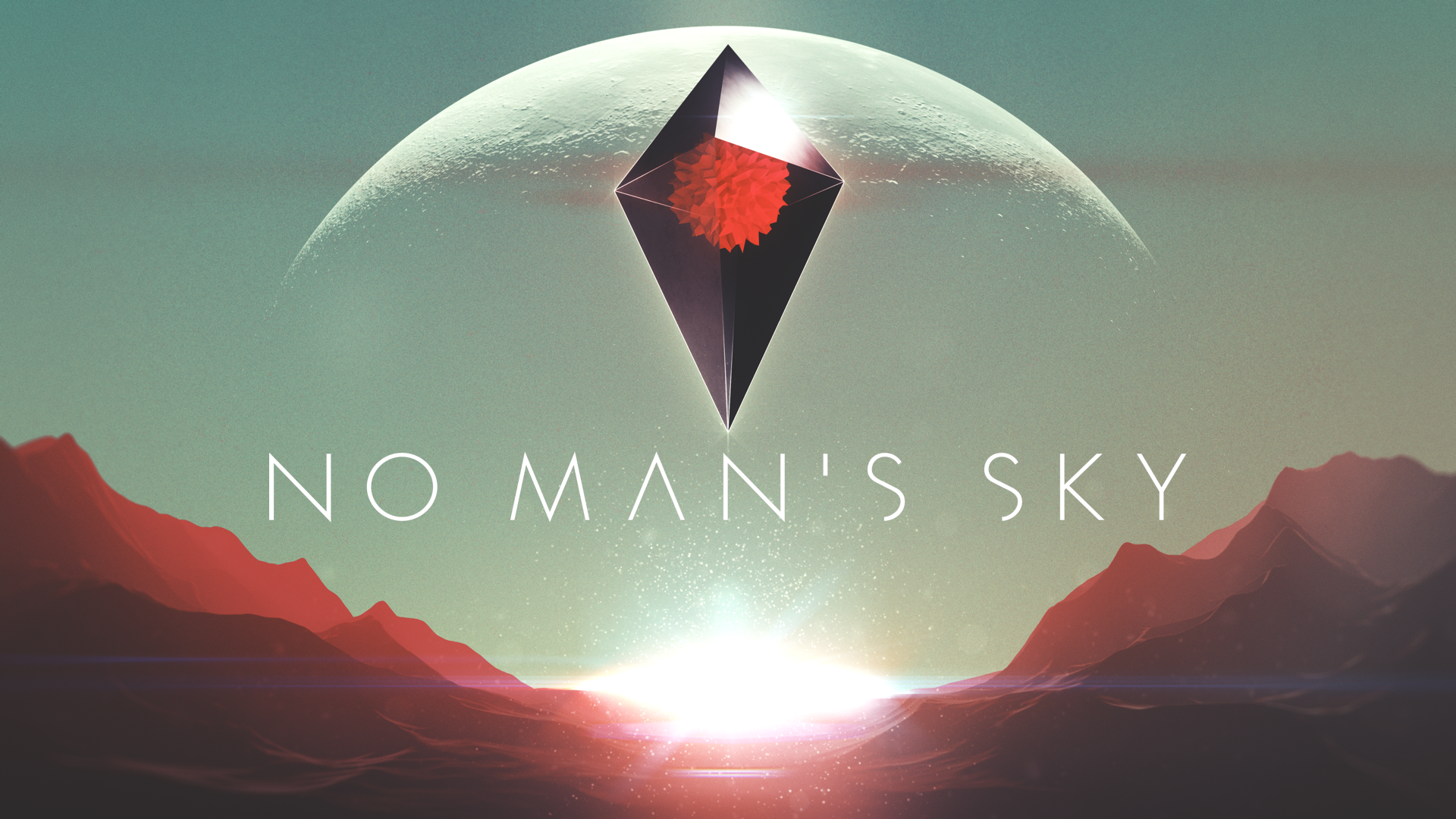
It's the floating translucent diamond that has been synonymous with No Man's Sky from the start, but that symbol actually represents The Atlas, the mysterious fixture of Hello Games' universe that is seemingly harbor a secret or two of its two.
Players will use the Atlas to chronicle their discoveries -- be that planets, flora, animals and everything in between.
-
PC Version Pushed

Once set to launch alongside its PS4 brethren, we learned recently that Hello Games had postponed the PC version of No Man's Sky by three days.
It'll now arrive on August 12, though the studio failed to explain its reasoning behind the last-minute delay.
-
6GB on Disc

Though the digital size is yet to be determined, No Man's Sky will weigh in at 6GB on retail discs.
Although it seems someone paid an exorbitant amount of money to get their hands on an early copy...
-
$1,300 on eBay

eBay user daymeeuhn forked out a whopping $1,300 for an early retail copy of No Man's Sky.
That's quite the headline, but in responding to questions via Reddit, the user posted a fairly reasonable response.
"I’m a lucky guy. I’ve done well for myself. I have disposable income and I’m happy in life. I’m in a state of being where I don’t look at a purchase and determine the overall value by the price tag, but rather by how much happiness it will bring myself or the people I care about."
-
Done Deal
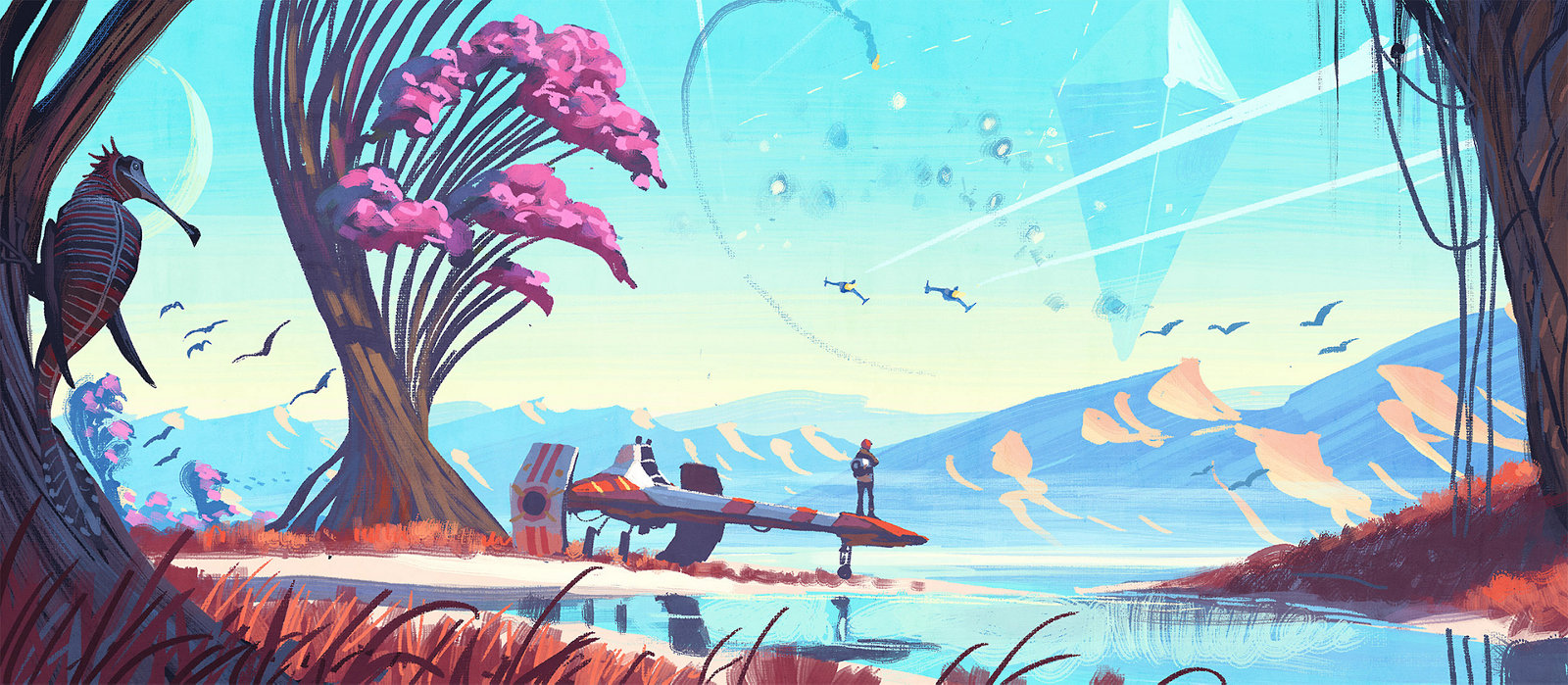
In a second update, that same flush eBay user claimed to have beaten the game. That is, reach the center of the universe. Mild spoilers within.
-
Top 5 & Trophy List

In anticipation of the No Man's Sky's arrival, we here at PSLS ran through the Top 5 reasons why we can't wait to delve into Hello Games' procedural universe.
The Trophy list has also popped, revealing the game's wealth of sci-fi inspirations.
-
Four Pillars & First Post-Launch Update
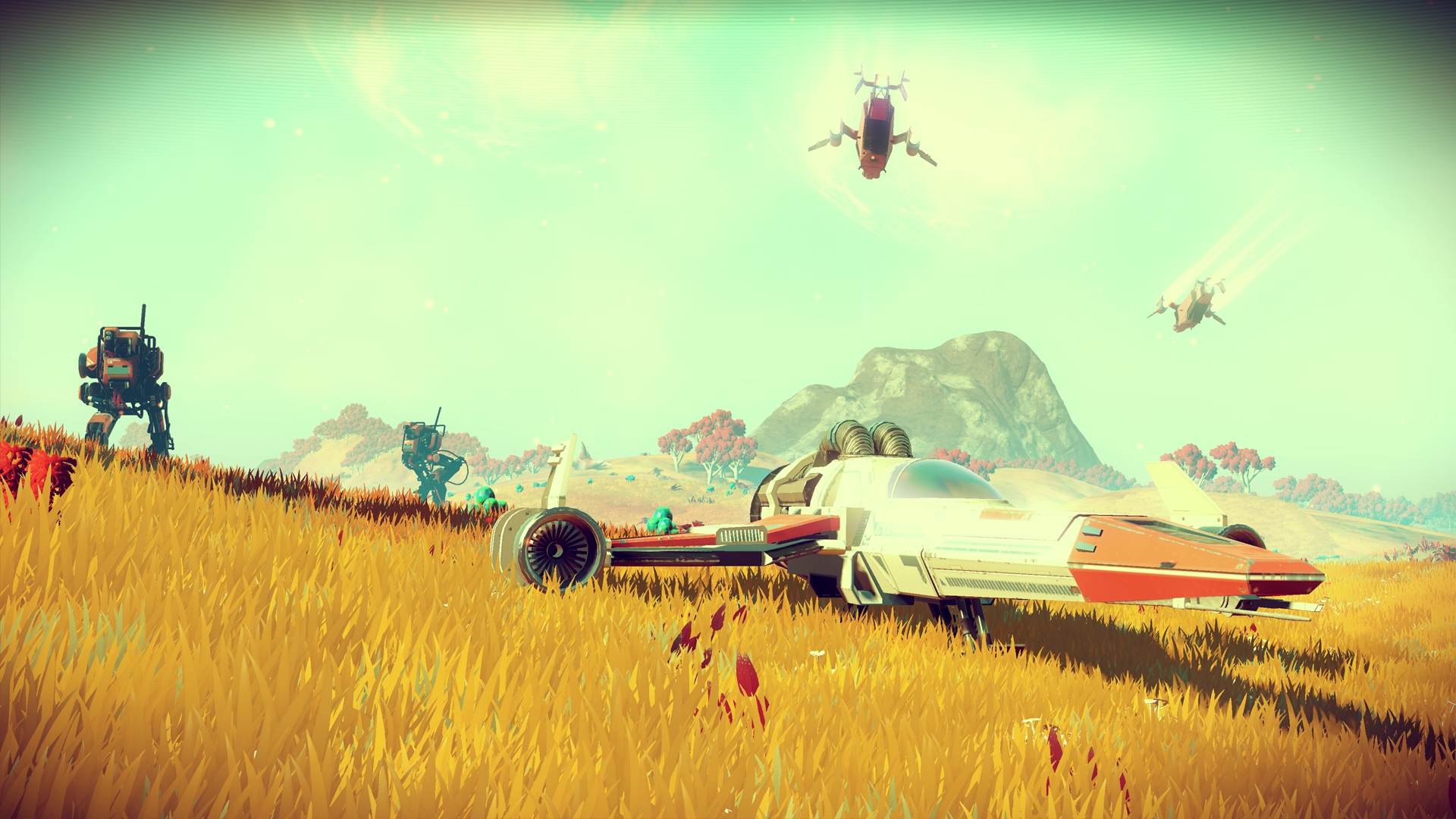
In educating would-be explorers about the moment-to-moment gameplay of No Man's Sky, a recent four-part video series covered the primary pillars: Survival. Combat. Exploration. Trading.
Beyond that, there's also word of the first post-launch update. It'll add "new features, balancing and content."
-
Rated T for Teen
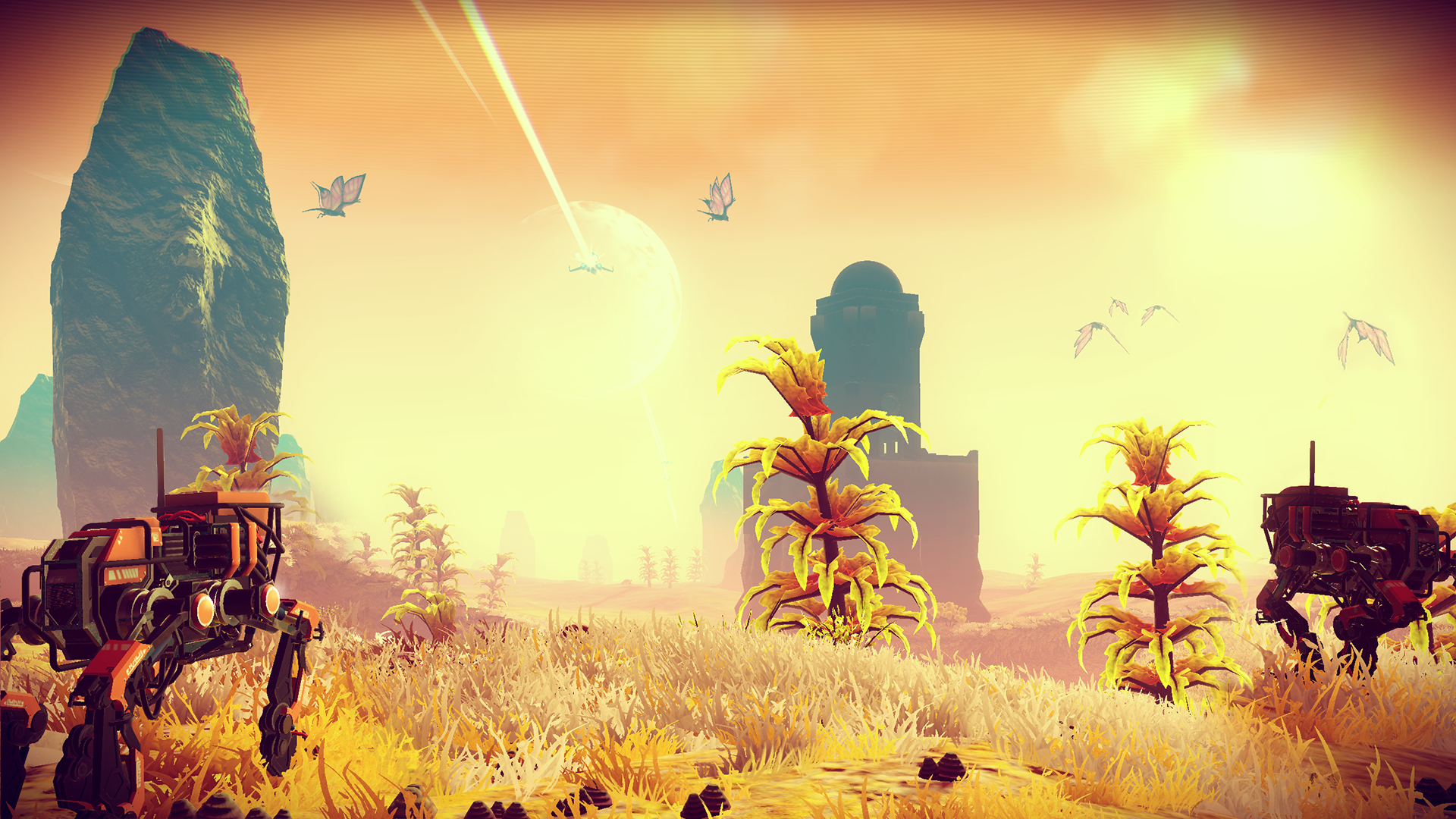
Citing laser blasts and explosions, the ESRB has officially rated No Man's Sky T for Teen.
Here's the rundown:
"From a first-person perspective, players travel between planetary systems to explore alien worlds for resources, upgrade equipment, and discover unique life forms. As players pilot spacecrafts to different planets, they can engage in space combat against enemy ships and space pirates; combat is accompanied by laser fire and large explosions."
-
Limited Edition & Faceplate

Priced at $79.99, the No Man’s Sky Limited Edition bundles together the game itself, steelbook, art book, comic, and more.
There's also a sleek faceplate to add to your PS4.
